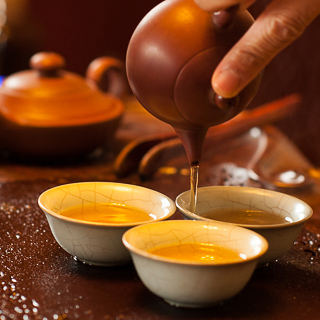
For many immigrants trying to make it in a new country, may they be Asian, Middle Eastern, or British with their cherished teapots from grandma, tea drinking is a custom brought with them from their homeland, woven into their new lives, and then passed on to future generations. Sometimes, the innate desire to fit in ceases the tradition. Other times, as in the case of novelist and six-time New York Times bestselling author, Lisa See, tea drinking remains a daily ritual: one that offers her a moment to reflect. And each cup a subtle reminder of her Chinese-American family and its East-meets-West story, bittersweet past.
In 1871 See’s great-grandfather, Fong See—an illiterate peasant from a poor family—left his home village in southern China for “Gold Mountain” (the Chinese name for the United States). Only 14 years old, he set sail for the land of opportunity, like many of his compatriots did before him, with meager possessions in hand and great hope in the heart: that one day, he would return home with gold in his pockets and stories to tell.
More than a century later, See was the one to tell her great-grandfather’s story in her meticulously researched memoir about her family’s love, struggle, and survival in the United States. On Gold Mountain became one of the first favorite books to capture Chinese immigrant life in its historical context: a homeland ravaged by poverty and political instability and an America rife with racial prejudice.
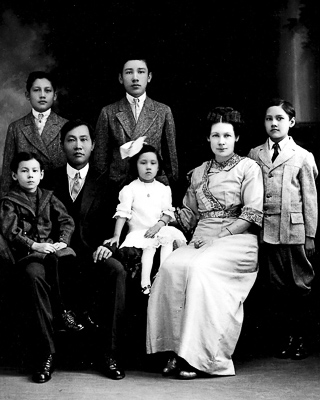
As she explained in her book, back then, Chinese immigrants faced many discriminatory laws. They were not allowed to own property, to testify in court, or to become naturalized citizens. Despite obstacles every step of the way, Fong See went on to become the godfather of Los Angeles’ Chinatown and, for a time, its richest merchant. In frontier California, males greatly outnumbered females. There he made his initial fortune peddling crotchless underwear to prostitutes, “what our family euphemistically called ‘fancy underwear for fancy ladies,’” says See.
Eventually, encouraged by his Caucasian wife Ticie Pruett, together they switched to selling Chinese curios, and then antiques to museums and collectors. Pruett “divorced” him (i.e., dissolved the “partnership” contract between them, as interracial marriage was illegal at the time) after he, as a Chinese man of his stature might in those days, took a second wife. Nevertheless, she loved him until the end, and he asked to be buried near her.
“I spent much of my childhood in Chinatown with my paternal grandparents,” recalls See. “The rest of the time I lived with my mother. We moved eight times before I turned nine, so Chinatown became home base for me.” It was at the family’s Chinese antique store, the F. Suie One Company, that See grew up building forts under altars, reading books in Buddha’s lap, watching her Grandpa Eddy and great-uncles restoring antique furniture, or listening to Grandma Stella and great-aunt Sissee recount, over cups of strong tea, the stories of Fong See, the family, and Chinatown.
Like the images of her beloved grandmother and great-aunt sipping tea and sharing stories, somehow tea was just “always present,” accompanying the family through precious moments, inconspicuous yet timely, the way the tender buds of spring know precisely when to unfurl.
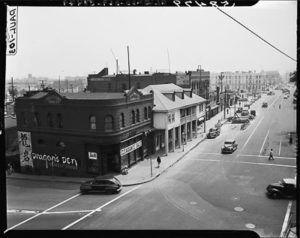
In Fong See’s time, numerous deals were made and visitors welcomed over rounds of tea. And along with food, art, and Hollywood, Chinese tea helped the family survive the Great Depression when few could afford antiques. Over cups of tea, together with Grandpa Eddy’s young artist friends, Benji Okubo and Tyrus Wong (later best-known for creating the ethereal scenery for Walt Disney’s Bambi), they dreamed up the idea of running an artsy chop suey joint in the basement of the store.
Dragon’s Den, with its simple Chinese dishes, tea, and giant murals of the Eight Immortals, Buddha, and the like, became a hit with the Hollywood crowd. Set designers who came to rent props upstairs would stay for dinner. Walt Disney, the Marx brothers, and Anna May Wong, the first Chinese American movie star and the inspiration behind the tear-jerker ballad “These Foolish Things Remind Me of You,” were among the patrons. Just like a Hollywood movie, hard times miraculously turned into a magical time!
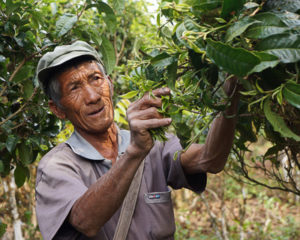
See herself started drinking tea at a young age: “With my grandparents, we would go for dim sum. Although I was very little, just four or five years old, they would give me tea.” Now she enjoys several cups a day and, for the occasional special treat at her local Indian restaurant, a warm cup of creamy masala chai infused with rich spices: green cardamom, cinnamon, peppercorns and more. Her taste preference, she thinks, “embodies both the Eastern and Western idea of tea,” and is, above all, “greatly influenced by the people and places.”
Those people include her grandmother. “Everything about her was so very Chinese except for her red hair, where I get mine from, and that she liked English Breakfast with a little milk in it.” As for her Uncle Gilbert, he was a lifelong devotee of that earthy brown tea brimming with the nostalgic scent of wet woodland after a summer rain. “For him, it was Bonay (Cantonese for puer tea) or nothing else.”
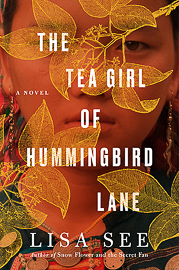
See savored Longjing in Hangzhou for her novel Peony in Love, about 17th-century women writers in the Yangzi River Delta. Lightly grassy with lingering, chestnut-like overtones, Longjing is China’s most famous green tea, though the pots of tea she shared with locals on research trips in the remotest villages, some could only be reached by foot or oxcart, are just as present in her memory. And that’s tea: so much of it is about the people and the places.
And “that sense of continuity… the spiritual feel of it,” she explains, inspired her to make tea the historical background of her novel The Tea Girl of Hummingbird Lane, for which she traveled to Yunnan, immersed herself in the culture of the indigenous tea-loving Akha people, and tasted sun-dried raw puer made from a thousand-year-old tree.

On Nannuo Mountain, See learned of an Akha saying: “No coincidence, no story.” This adage happens to be true in many ways, not only regarding the colorful history of See’s own family but also in the chance encounters that led to her deeper understanding of puer tea and Akha culture for her novel. Through a contact outside of the tea business, she met the owner of Denong Tea and then Linda Louie of Bana Tea, both puer tea specialists in California. This soon led to See being invited by Louie to tag along on a tea-buying trip that spring, hiking and driving up and down the bumpy dirt roads on the tea mountains to meet the villagers and being introduced to Louie’s teacher, Vesper Chan.
“Everywhere we went, people would come up to shake Master Chan’s hand, asking for his autograph; it’s like they all knew him!” recalls See.
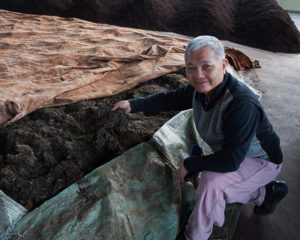
Because of Chan, See got to visit a puer tea fermentation warehouse, where Westerners are rarely permitted to enter. Chan is widely credited as the one who, in the 1990s, educated people in Hong Kong on how to brew and enjoy raw (sheng) puer tea at a time when most locals were only drinking ripe (shou) puer. Manufacturing cooked puer requires large, well-equipped indoor facilities, which is way beyond the means of small growers. By increasing the visibility of raw puer and aged raw puer, he indirectly helped improve the livelihoods of many small growers and ethnic-minority families.
Another cherished encounter on Nannuo Mountain was with an Akha woman named Ah-bu. See spent three days with Ah-bu and her family, tasting tea in their little pavilion and learning the A to Z of puer tea: from how to pick the leaves, to how to properly wrap a puer tea cake (bing).
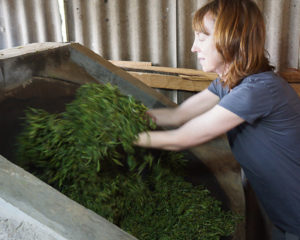
“I felt an instant connection with Ah-bu,” says See. “She loves to ask questions and collect folklore. It was after meeting her that I decided to focus on the Akha ethnic minority. Not only is she a puer tea expert, she is also passionate about preserving Akha culture. And I find her family story an inspiration. In her teens, she begged her family to let her go to a trade school. They were afraid that after going down the mountain, she’d never come back. Finally, they let her go, but they could only afford a quarter of the fees necessary for food at school, so she was often hungry. To help out the only way they could, her mother would send down little packets of tea for her to give to her teachers, who in turn would feed her. It got her through those times and later led her teachers to recommend she attend the new puer tea college.”
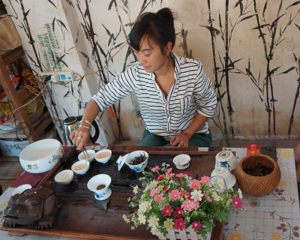
Meeting Ah-bu was an unexpected source of ideas for some of her plotlines. See is a believer that life is a journey. That often we have to “walk a bit further,” to unearth an answer to the past, find a clue for the future, or to finally encounter those we are fated to meet.
And to “walk a bit further,” in 1991, research for her memoir took See to Fong See’s home village, Dimtao, for the first time. “Not until I was on the roof of his house in China, did I suddenly have this deeper understanding of my family, and in particular, my great-grandfather.”
“He died when I was two, so I didn’t really know him,” says See. “People had always said he ruled us with an iron fist, and he was not known as a generous man. My great-grandmother longed for a home, but he never bought one for her.
“Then there on the roof, the cousins were pointing out things: ‘Look, there is the road your great-grandfather built. Oh, over there is the school he built. Those are the houses he built for the villagers…’ That was the moment when I saw him as a three-dimensional person for the first time.”
See realized that in little Dimtao, her great-grandfather was a benefactor. “The ‘home village’ wasn’t just about obligation. He’d lived there less than two decades, yet in his heart, that place really was still his home.”
And See reflected on his half-crumbled house, so much of it destroyed during the Cultural Revolution: “Yes, it is a Chinese house with a tiled roof. But the aesthetics also remind me of these Spanish-style mansions in Hancock Park, the most sophisticated area of L.A. in the 1920s. So he did take that Western sensibility with him to China, and he did build his wife a house there after all, one that she would have really loved.” Just like his Eurasian children took an Eastern sensibility with them. They, See recalls, “were so connected to the store, to these artifacts that their parents had brought in, and filled their own backyards with bamboos and subtropical plants like those I saw in little Dimtao.” She says, “I miss them every day. And so much of my writing… it is a way for me to go back to that time when I was young and they were all there.”
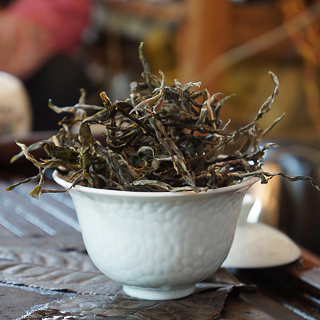
In remembrance of the time See’s great-grandmother had spent in the village long ago, the villagers called Fong See’s mansion the gway house—the house of white ghosts. That emblematic sculpture of the past, a wistful mini edifice of two cultures, great love, triumphs, and heartbreaks. There, on top of it, stood See that day, a small dot in the floating world. There, there—between all that was behind, and all that was still to come.
Inspired by this journey, See went on to uncover other lost or forgotten stories and brought them to light, to life, in her novels: may it be about nu shu, a secret women’s language in China (Snow Flower and the Secret Fan) or the Chinese American nightclub performers of the 1930s and ’40s (China Dolls). She remembers the morning she concluded her visit to her ancestral village, her relatives brought out a miniature wooden water buffalo with a small boy sitting on its back, as a gift for her sons. And for her, an enameled canister of local tea, to take home.
***
Photos courtesy of Lisa See (unless otherwise noted). This article is a part of Tea Journey’s upcoming Tea Discovery issue, click to subscribe.
Tea Market
Get More Value from Your Tea: BRU Maker One
+41794574278
Jacque's Organics
(647) 804-7263
Lisa See wrote a feature article for National Geographic about her tea trip. The piece won the prestigious Lowell Thomas Award given by the Society of American Travel Writers for the category “Best Culinary Travel Writing” in 2019. Here it is:
https://www.nationalgeographic.com/travel/features/one-perfect-cup/